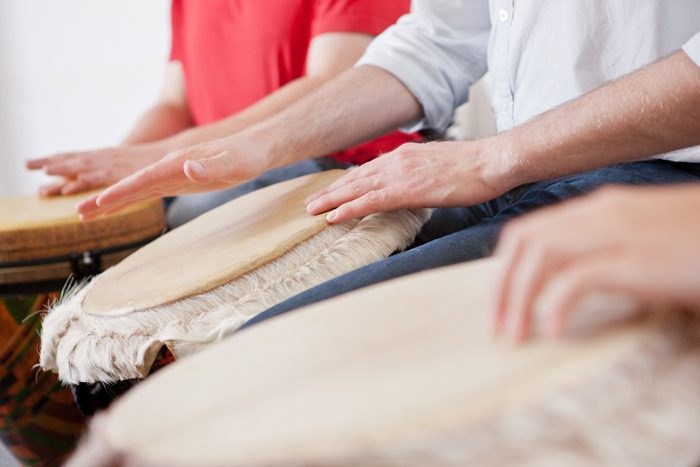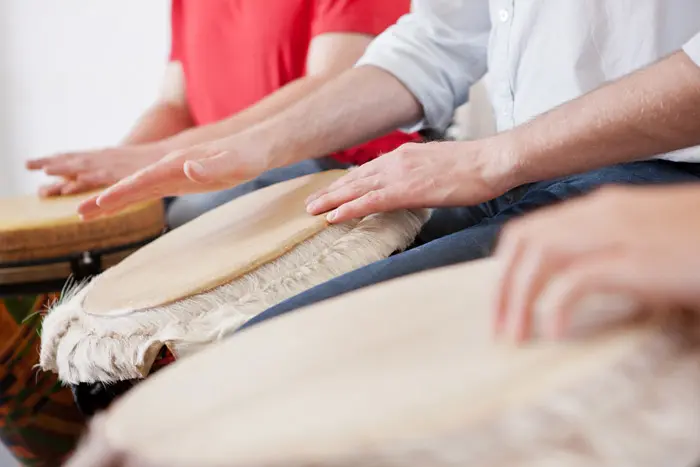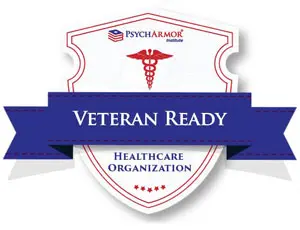Drumming: Tap Into Your Inner Rhythm for Healing
 In the whiz-bang rush of our modern age, sometimes it’s challenging to get to the heart of who we are as human beings. If we’re too caught up in technology, we sometimes miss the primal aspects of our connection to ourselves and to the universe. Drumming as a holistic therapy is one way to regain that vital interrelatedness.
In the whiz-bang rush of our modern age, sometimes it’s challenging to get to the heart of who we are as human beings. If we’re too caught up in technology, we sometimes miss the primal aspects of our connection to ourselves and to the universe. Drumming as a holistic therapy is one way to regain that vital interrelatedness.
The Benefits of Drum Therapy
In an article for Psychology Today, Robert T. Muller quotes sound therapist Gary Diggins when he says, “We moderns are the last people on the planet to uncover what older cultures have known for thousands of years: the act of drumming contains a therapeutic potential to relax the tense, energize the tired, and soothe the emotionally wounded.”
Muller, a psychology professor at York University and author of the book, Trauma and the Struggle to Open Up, believes that drumming, often combined with group therapy, allows for “creative and non-judgemental expression of emotions.” For many people, sharing a circle and a beat with other people releases somatic tension often associated with PTSD, trauma, and mental health issues.
For years, scientific researchers have uncovered the positive effects of drumming. For example, a 2018 study determined that the process helped people with mental health issues and their caregivers. The results indicated that “emotional, psychological, and social dimensions of well-being emerged for both patients and carers, accounted for through six themes.” We list those verbatim:
- Hedonia: positive affect and pleasant physical effects of drumming.
- Agency: initiative and sense of control.
- Accomplishment: non-specific and in relation to musical goals.
- Engagement, through focus and flow.
- A redefinition of self, through self-awareness, construction of a positive identity, self-prospection, and incorporation of a musical identity.
- Social well-being, through connectedness and positive relationships.
WeSpark Cancer Support Center cites research into additional health benefits of drumming that include:
- Reduced anxiety, stress, and tension
- Increased release of endorphins for natural pain relief
- Enhanced immune system
- Improved sleep
- Lessened depression
Another organization, Raven Drum Foundation, organizes healing drum circles for current and former military personnel who struggle with addiction and PTSD. Co-founder Rick Allen is the drummer for the rock group Def Leppard, and he uses his story of overcoming a car accident that severed his left arm as well as personal issues with PTSD and his sobriety journey to help provide a compass for others.
How Do You Get Started With Drumming?
Drum and music therapy are common holistic approaches in addiction rehabilitation. They not only help during inpatient or outpatient treatment programs, but also provide accessible techniques for maintaining sobriety.
For many people, their first experience with this method is within a drum circle. There’s no need for prior knowledge of drumming, and people of every age and culture can participate. Different types of tuned drums and percussion instruments are often provided for use in a therapeutic setting, such as:
- Bongos
- Djembe
- Maracas
- Bass drum
- Shaker
- Woodblock
In more formalized settings, attendees might be required to bring their personal instruments.
Facilitators explain how the process works, how certain rhythms might be played, and when the process shifts. Participants also have the freedom to expand on beats in areas depending on what they know and how they feel.
Arthur Hull, a prominent drum circle facilitator, says, “The quality of the music produced in an event like this is not based on the rhythmical expertise of the players, but on the quality of their relationship with the other people in the circle. The result is those magical musical moments where one powerful voice is created out of the many. In those moments, the players stop worrying about keeping time because time, as they know it, has stopped. And in its place is a living breathing entity, expressing timeless joy, passion, and release through the power of rhythm.”
In this video from one of Hull’s 2018 large community events, you’ll notice that some people are drumming a primary beat while others alternate from it—and yet it all works to create a positive energetic experience. Not every drum circle is quite this big! Some might only have a handful of participants. Yet the shared rhythm is still effective.
Many places have community drum circles to join, or you can listen to or even play along with videos you find online.
Another Tool to Be Your Best Self
As much as we don’t like to admit it, not everyone responds to talk therapy. There are numerous reasons for this, and each unique to every individual. This is why Seabrook offers eye movement desensitization and reprocessing (EMDR), brainspotting, music therapy, and drumming as part of its holistic recovery program options. Non-verbal expression through these avenues still provides somatic release and stress relief, and helps the brain heal from trauma and addiction.
If you’re curious as to how drumming and other holistic applications might help you, please reach out.




